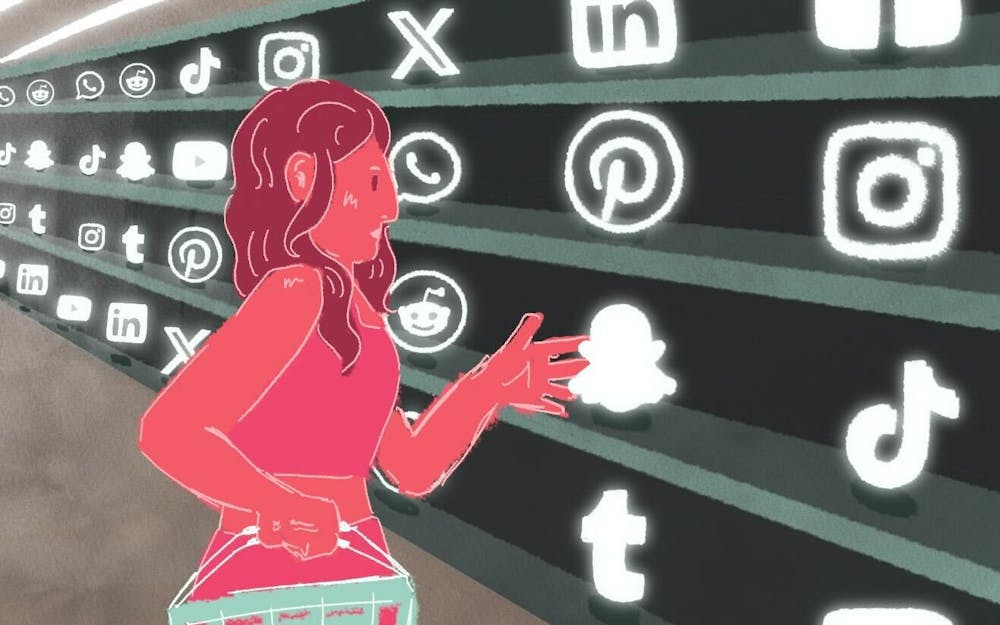Rihanna’s Fenty Beauty. Kylie Jenner’s Kylie Cosmetics. Selena Gomez’s Rare Beauty. Kim Kardashian’s Skims. The list of celebrity and influencer brands goes on and on. The impact that these influencers have on the consumers are both a blessing and a curse.
Celebrities and influencers are the new face of the advertising industry now that several own some of the world’s biggest brands. Thanks to social media, it is the easiest money-making scheme out there and about every famous person that you can think of is jumping on the train to create their own brand.
Social media platforms such as TikTok give the ordinary person a chance to be an influencer. This comes with many ups and downs. On one hand, people of all ages and backgrounds can become content creators and spread their ideas and opinions within a larger community. On the other hand, strong trends, which seem flashy and fun, can ultimately lower a lot of people’s self-esteem as they get more popular.
Honestly, what does Rare Beauty’s liquid blush have that a standard Ulta liquid blush does not have? At least nothing that doesn’t get the job done. There is nothing that makes Rare Beauty significantly higher quality, although admittedly the final product is aesthetically pleasing. It is the positioning of Selena Gomez as the face and founder paired with it being an essential part of all your favorite influencers’ daily get-ready-with-me videos.
It is not even just influencer-created products anymore; celebrities and influencers can sway consumers with anything endorsable or mentionable. It is no surprise that various brands want to collaborate, but the impact is astronomical.
When Taylor Swift is spotted walking around the streets of New York City, fans analyze her outfit and how much each piece costs and where to find it. Within hours, those items completely sell out. For example, the bedazzled, studded jean shorts from Area that Swift wore to the Chiefs vs Jets football game just this week sold out on all shopping platforms it was available on. The modern age redefined the meaning of product placement and took it to an entirely new level.
[Related: OPINION: No one likes a mad woman]
There is an in-built desire to be a part of the “in-crowd.” When certain products are deemed “cool” or “mainstream,” it is natural for consumers to want to engage with them. This phenomenon happens more often than we think, and product sales grow exponentially. When TikTok influencer Charli D’Amelio started publicly going to Dunkin’ Donuts, the company created an entire drink inspired by her basic order, a Cold Brew with whole milk and three pumps of caramel swirl. This started a frenzy of customers and skyrocketing sales. According to an article, they reported 20% overall sales boost the day the drink was released and a 45% increase the day following.
These insane trends cause a setback, as more of Gen Z’s want to do whatever they can to be a part of the crowd and fit in. Having more products from Fenty Beauty, for example, signifies some kind of wealth. A sense of belonging is one of the most integral parts of being a human being and influencers being given a platform where they can constantly share what they are up to and what they are using has caused overspending by many. While it is incredibly smart on a marketing front, there are ties with low self-esteem.
Low self-esteem is a growing issue with younger people. According to an article, 85% of people report struggling with self-confidence issues at some point in their life. It’s not the fault of the influencer or celebrity, as they are just trying to make profit., But it can hurt viewers who are consistently engaging with this content in the long run. To be smart and healthy consumers, we need to make sure that we are not getting sucked into this all-too-familiar cycle and be thoughtful with our selections.
Kavya Santhanam (she/her) is a junior studying media advertising and marketing.






